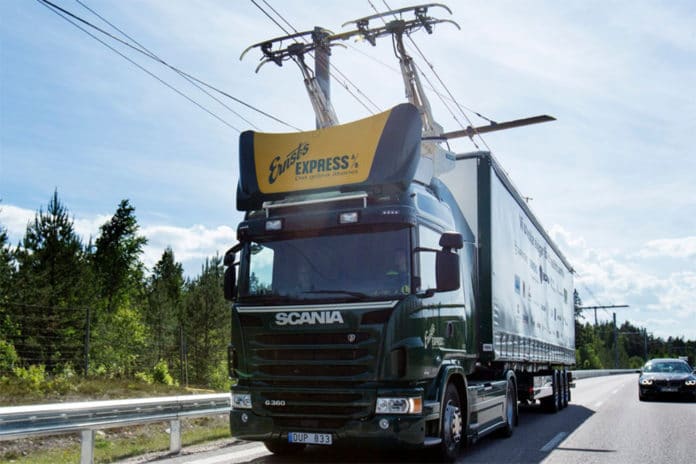There is no doubt, Electric Mobility is the future of the transportation industry. Most of the countries are moving towards that future, Germany also has lined up in the row. The country has recently started real-world tests of an eHighway system, in other words, a new electric highway that uses overhead electrified cabling to recharge the batteries in hybrid vehicles as they drive.
The system is located on a 6.2-mile stretch between Frankfurt airport and a nearby industrial. It uses the Siemens eHighway technology and allows trucks with special roof-mounted equipment to hook up to electric lines. The eHighway delivers 670 volts of DC power to the conductor rods of a truck.
It allows hybrid big rigs to charge their batteries while traveling at speeds of up to 56 mph (90 km/h). The trucks having a hybrid system that uses a powerful electric motor, a diesel engine and batteries that can be quickly charged from overhead power lines.
All thanks to the energy stored in the battery, when the trucks leave the overhead line on the highway and enter regular roads, they continue operating electrically and emission-free. And when the batteries are fully depleted, the truck can easily switch to its diesel engine. In addition, the built-in sensors notify the truck when to switch back to a combustion engine if there are no overhead cables available.
According to Siemens, the eHighway system is twice as efficient as conventional internal combustion engines and helps reduces local air pollution and contributes significantly.
This is not the first time we have seen the company’s attempt to charge the electric vehicle when they are moving. The similar electric highways have been built in Sweden and in the United States. Sweden has also installed underground rails on one road that can recharge cars.
The company also claimed that its eHighways can also save a ton of fuel- 20,000 euros worth for every truck traveling 62,000 miles (100,000 km).
The system will not have a major impact for a while. Only five trucks will run he electrified stretch each day where roughly 10 percent of the road’s 135,000 daily vehicles are heavy trucks, according to Siemens’ website.
Though, the reduced emissions footprint could scale up as more trucks support the system. It could also encourage the trucking companies to go electric knowing that their cargo haulers could drive longer on a charge.
This 6-mile stretch will be tested until 2022, after which a decision will be made whether to expand the project or not.
